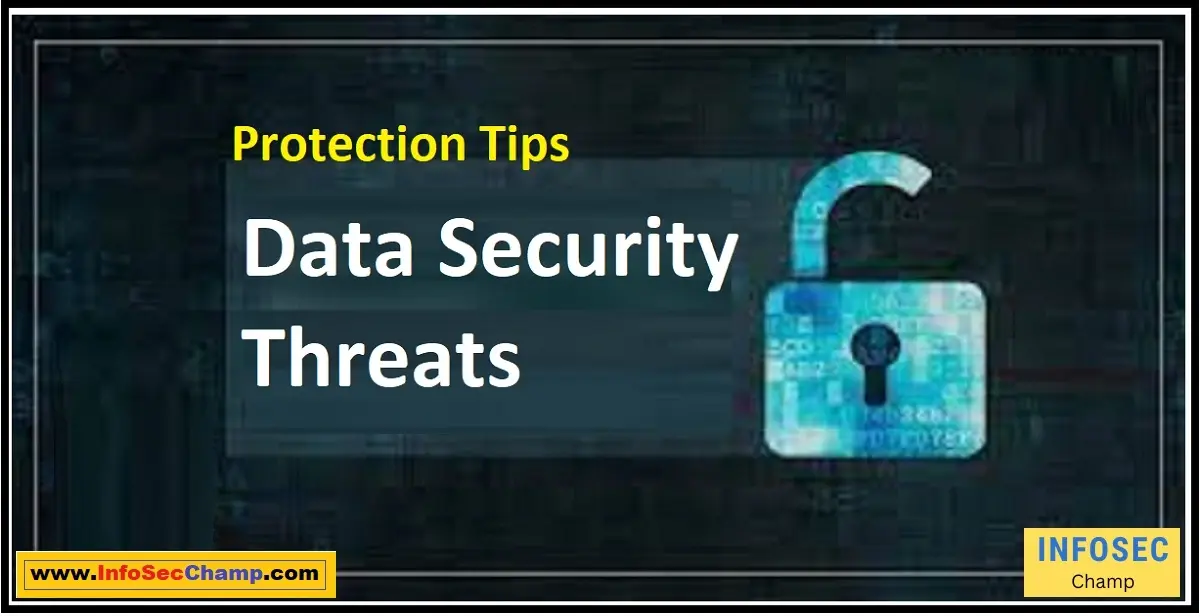Data security threats are on the rise, and it’s more important than ever to stay informed and protected. With new threats emerging every day, adapting your data security measures to the latest threat landscape is crucial. In this article, we’ll explore the top data security threats of 2023 and provide expert insights and strategies for safeguarding your data against malicious attacks. Whether you’re a small business owner or a tech-savvy individual, our guide will equip you with the knowledge and tools you need to protect your valuable information.
What are the top data security threats of 2023?
As we enter 2023, new risks are continually appearing in the constantly changing threat landscape for data security.
In 2023, the following are some of the most significant data security threats to be aware of:
- Ransomware Attacks: Cybercriminals are increasingly utilizing sophisticated techniques to infiltrate systems and keep data hostage, making ransomware assaults a serious danger to data security.
- Hazards Associated with Cloud Security: As more businesses move their data to the cloud, new dangers with cloud security have emerged, including illegal access and data breaches.
- Insider Threats: Whether deliberate or unintentional, insider threats present a serious risk to data security. Employees, independent contractors, and other authorized users with access to sensitive information fall under this category.
- Internet of Things (IoT) Vulnerabilities: As IoT devices proliferate, new vulnerabilities have emerged that cybercriminals can take advantage of, such as outdated software and weak passwords.
- Phishing Scams: Social engineering techniques are increasingly being used by cybercriminals in phishing scams to deceive consumers into disclosing sensitive information.
How can you adapt your data security measures to the latest threat landscape?
A thorough strategy that covers the following is necessary for updating your data security safeguards to the most recent threat environment:
- Performing a Risk Assessment entails determining the assets that must be safeguarded, gauging the dangerous environment, and gauging the potential consequences of an assault.
- Passwords are frequently the first line of defense against unwanted access, therefore it’s critical to create strong password rules that include complicated passwords, two-factor authentication, and frequent password updates.
- Encryption Techniques: Encryption is a key technique for protecting data, both in transit and at rest. This includes using encryption software for emails, hard drives, and cloud storage.
- Firewall Protection: Firewalls are an essential component of network security since they help to prevent viruses and unauthorized access.
- Data Backup and Recovery: In the event of a data breach or other emergency, it’s crucial to have a plan in place for data backup and recovery. This includes testing recovery processes and routinely backing up data.
In the modern digital world, why is data security crucial?
Because of the following factors, data security is more crucial than ever in today’s digital era:
- Data Breaches: Data breaches can lead to the loss of sensitive data, such as personal and financial information, which can have major repercussions for both individuals and companies.
- Compliance Requirements: Many industries have strict data security regulations that organizations must comply with, such as the General Data Protection Regulation (GDPR) and the Health Insurance Portability and Accountability Act (HIPAA).
- Brand Reputation: A data breach can hurt a company’s reputation, which can lead to a loss of clients and income.
- Intellectual Property Protection: Businesses are required to safeguard their intellectual property, including trade secrets and patents, from theft and unlawful access.
- Cybercrime: Because cybercriminals’ strategies are always changing, it is crucial for enterprises to keep abreast of the most recent threats and responses.
Who should be concerned about threats to data security?
Data security concerns can affect people and organizations of all sizes, so everyone should be worried about them.
Nonetheless, the following populations are especially at risk:
- Small and Medium-Sized Businesses: Small and medium-sized organizations are more vulnerable to cyberattacks because they frequently have insufficient resources to dedicate to data protection.
- Healthcare Organizations: Because of the sensitive nature of the information they handle, healthcare institutions are a prominent target for hackers.
- Financial Institutions: Financial institutions are a target for cybercriminals because they possess a wealth of valuable information, including financial and personal data.
- Government Agencies: Government agencies are a prime target for cyber espionage because they retain a lot of sensitive information, including classified information.
People are also vulnerable to data security issues, especially identity theft and financial fraud.
How often should your data security measures be updated?
To stay on top of the most recent dangers, it’s critical to routinely upgrade your data security procedures.
Your data security mechanisms should be updated at certain critical junctures, such as:
- Following a Security Breach: If your company has suffered a security breach, it’s critical to update your security protocols to fend against potential intrusions.
- As New Threats Emerge: As new threats arise, it’s critical to update your security procedures to protect against them.
- When Putting New Systems Into Place: It’s critical to check that newly implemented system are safe and adhere to the most recent data security guidelines.
- Frequent Security Audits: Regular security audits can help uncover areas where security measures may be deficient or need to be updated.
Where can you find resources for improving your data security?
For enhancing your data security, there are several resources accessible, including:
- Government Organizations: Government organizations that offer information and advice on data security best practices include the Federal Trade Commission (FTC) and the National Institute of Standards and Technology (NIST).
- Industry Associations: For professionals in the sector, industry organizations like the International Association of Privacy Professionals (IAPP) and the Information Systems Security Association (ISSA) offer resources and networking opportunities.
- Security software providers: Companies like Symantec and McAfee offer a variety of tools and services to enhance data security.
- Online training courses: SANS Institute and Udemy both provide online training courses that cover a variety of topics related to data security.
How can you detect and prevent phishing scams?
Phishing schemes pose a common threat to data security, however, there are ways to recognize and stop them, such as:
- Employee Education: Teaching staff members how to spot phishing emails and how to report suspicious emails will help stop successful attempts.
- Employing Anti-Phishing Software: Anti-Phishing software can assist in identifying and preventing phishing emails from reaching consumers.
- Checking URLs: Make sure a link in an email is real before clicking on it.
- Verifying Information Requests: It’s crucial to confirm the request is valid before supplying any sensitive information, such as login passwords or financial information.
What encryption techniques are best for protecting your data?
- Advanced Encryption Standard (AES): AES is a widely used encryption system that offers secure data encryption both at rest and in transit.
- Transport Layer Security (TLS) is a mechanism for secure online communication that is frequently used to encrypt web traffic.
- PGP is a data encryption and decryption program that can be used for email and file encryption.
- Secure Sockets Layer (SSL): SSL is a technology that enables secure communication between web servers and web browsers and is frequently used for e-commerce transactions.
- Virtual Private Network (VPN): VPNs are used to protect data in transit and to offer secure communication between networks over the internet.
Organizations and people can improve their data security and safeguard sensitive information from online dangers by employing these encryption approaches.
Conclusion:
In the current digital era, data security risks are continuously changing, thus it’s critical to adjust your security protocols to the most recent threat environment. Organizations and individuals can safeguard their sensitive information from hackers by using the best practices for data security, such as completing risk assessments, implementing strong password restrictions, employing encryption techniques, and staying up to date on the most recent threats. You may stay one step ahead of thieves and protect your important data by being proactive and keeping up with the most recent data security risks and defenses.

FAQ:
Q: What is the best way to protect against data breaches?
A thorough data security strategy that incorporates encryption methods, strict password policies, firewall protection, and regular data backups is the best way to guard against data breaches.
Q: Who is most at risk from data security threats?
A: Everyone is susceptible to data security risks, but small and medium-sized businesses, healthcare institutions, financial institutions, and governmental organizations are particularly in danger.
Q: How can you prevent insider threats?
A: Strict access controls, user activity monitoring, personnel background checks, and regular security training are all necessary to prevent insider attacks.
Q: What are the most common data security threats?
A: Ransomware attacks, cloud security risks, insider threats, IoT vulnerabilities, and phishing scams are among the most frequent dangers to data security.
Q: What is a data encryption and how does it work?
A: Data encryption is the process of encoding data so that only authorized users with the right decryption key can read it. AES, TLS, PGP, SSL, and VPN are just a few of the encryption methods that can be used for data that is both at rest and in transit.
Q: How can you detect and prevent phishing scams?
A: Employee education, anti-phishing software use, URL checks, and information request verification are all steps in detecting and avoiding phishing schemes.

